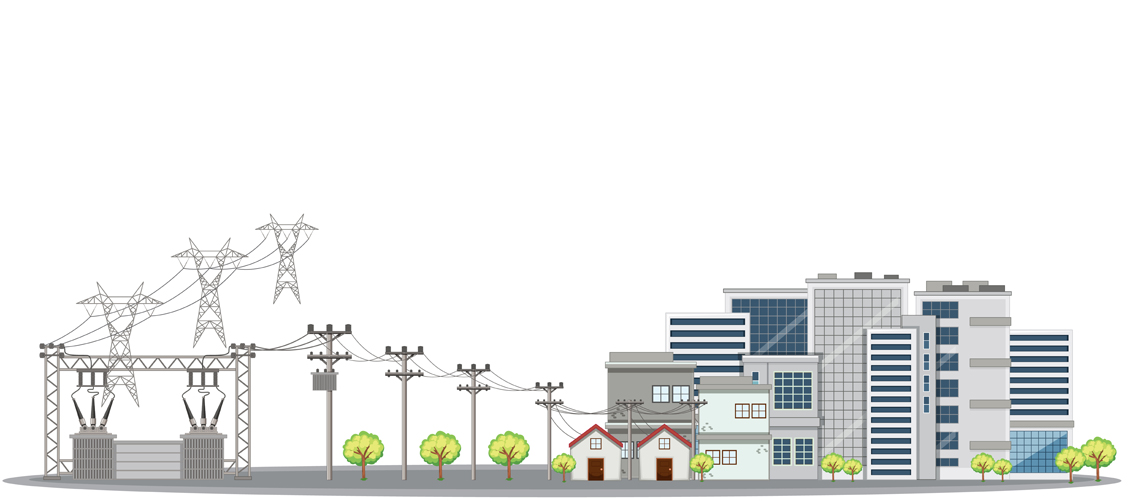Keeping in line with the reforms agenda, Prime Minister Narendra Modi announced a far-reaching Rs 100 lakh crore ‘GatiShakti National Master Plan’ on our 75th Independence Day this year. This mega plan is scheduled to be formally launched on October 13, 2021, and will give a huge boost to India’s infrastructure sector which is key to spurring economic growth.
The GatiShakti NMP proposes to integrate all utilities and infrastructure planning across sectors such as highways, railways, aviation, gas, power transmission and renewable energy under a single unified vision. Such an unprecedented step clearly outlines the vision for infrastructure development across the country, including power in general and transmission in particular which strengthens the energy lifeline for the country. The exemplary goal to have all utility and infrastructure planning under a holistic framework will ensure that new efficiencies are discovered with coordinated planning of cost and resources.
As India seeks to accelerate its growth momentum towards reaching the goal of evolving into a $5-trillion economy by 2025, the government has been consistently supportive and proactive towards clearing any challenges or impediments to ensure that the overall growth targets are getting achieved.
The ministry of power has ensured that an enabling policy framework for promoting competition and protecting consumer interest has remained at the forefront – with suitable provisions in the Electricity Act, Competitive-bidding Guidelines, and the Tariff Policy.
Last year, we were subjected to an unprecedented crisis in the form of outbreak of Covid-19 pandemic, which threw the entire nation out of gear. However, the ministry of power under the guidance of the Prime Minister, ensured through proactive decisions that the lights were always on all throughout the pandemic and in the midst of nation-wide lockdowns. The ministry was proactive in identifying the power sector as an essential service and issued notifications exempting it from the list of restrictive activities under the lockdown guidelines, along with allowing necessary provisions regarding ‘Force Majeure’, among others. This ensured that several thousands of crores of under-construction projects continue to remain viable.
The ministry of power has remained remarkably steadfast and focussed on the developmental agenda. It has ensured implementation of certain critical structural changes such as segregating the Central Transmission Utility (the planner) from Power Grid Corporation (the developer). Competitive bidding for transmission as well as RE projects has continued with full rigour to ensure India’s climate goals remain on track.
In order to meet its climate commitments and to achieve energy security, the Prime Minister has demonstrated leadership to the global community by setting an ambitious target of 450 GW of renewable installed capacity by 2030. His call for “One Sun, One World, One Grid” has set the tone for a strong transmission system that will support India’s renewable energy ambitions, along with supplementing the growth of renewables around the world.
Transmission has been an enabler in the renewables story, and various key projects are enabling renewable energy evacuation in different states. Case in point is the 350-km transmission line in Lakadia-Vadodra project in Gujarat, which connects the wind energy zones of Bhuj in Gujarat to the load centres in Gujarat and Maharashtra. In planning and execution of such transmission projects, the need for coordinated planning can be seen first-hand where different levels of approval are required from wildlife and forest departments as well as hundreds of crossings across power lines, railway lines, highways, rivers, and pipelines – making clear that coordinated planning and overview of end objectives are crucial for development of large infrastructure.
In this vein, the crystal-clear focus on future outlook and optimal planning processes have led to clearly identified transmission infrastructure projects to be developed for meeting the renewable energy goals by 2024. International independent experts estimate that ensuring 450 GW of renewable capacity by 2030 would require investments of Rs 10 lakh crore in power transmission infrastructure – transmission network would increase from present level of about 4.25 lakh ckm to more than 7 lakh ckm by 2030.
We are well on our way to that target, having already reached the 100 GW installed renewable capacity mark. The alignment of market forces, investor community, policy framework, and intent of private developers has made this feat possible.
Now, with the launch of the prime minister’s GatiShakti Master Plan and onset of a more holistic approach towards planning for utilities and infrastructure, we as a Nation are well poised to take another giant stride towards evolving into a $5-trillion economy while enabling reliable power for all.
Agarwal is Managing Director, Sterlite Power.

 Please wait...
Please wait...